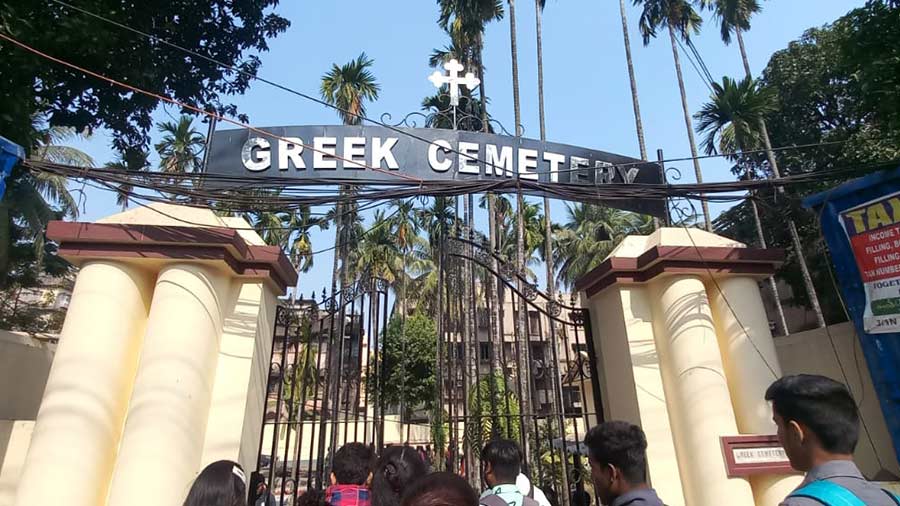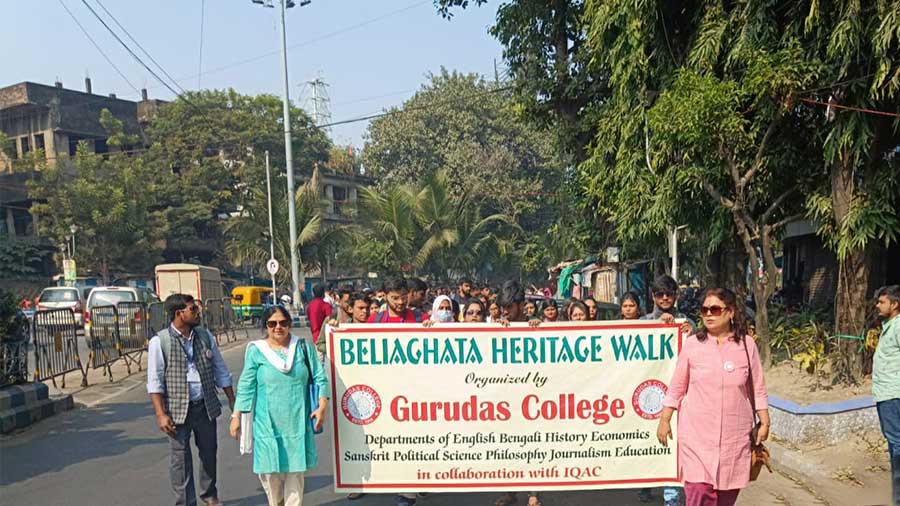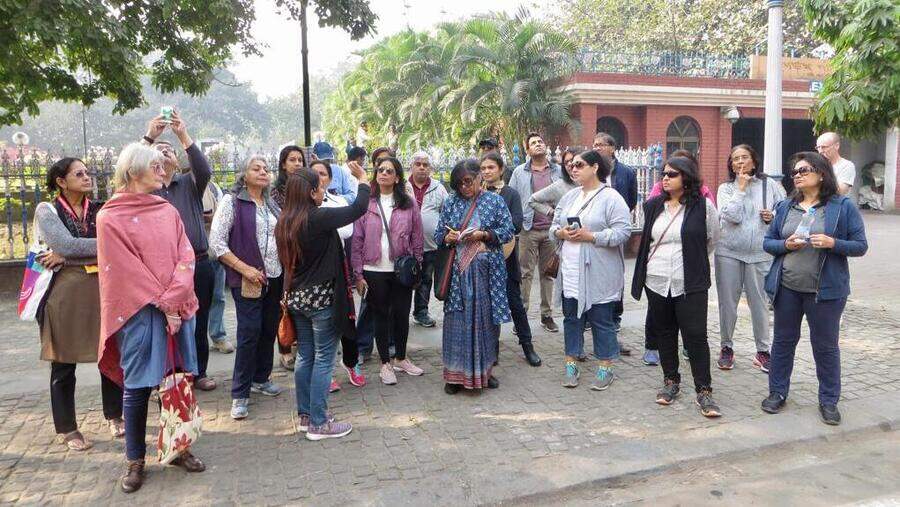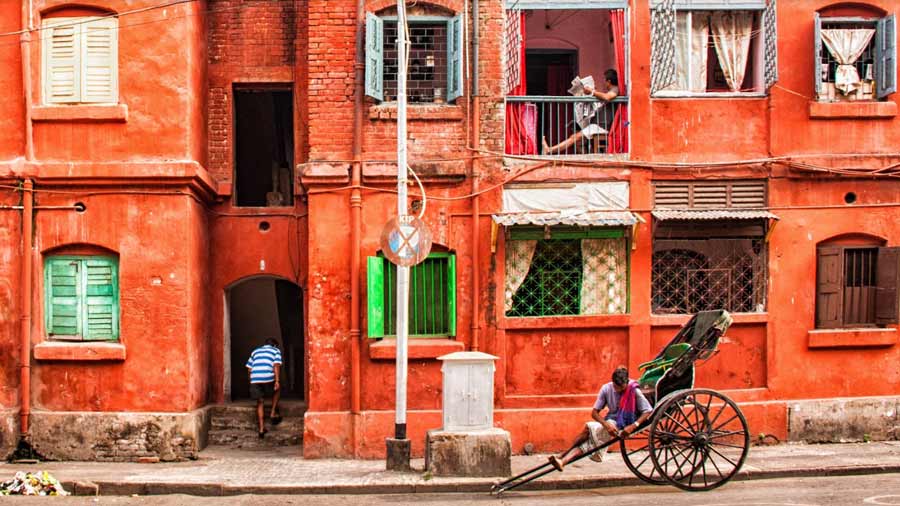Students and faculty members of Gurudas College, Kolkata, took to the streets of Beliaghata on the wintry morning of December 17, Saturday, to explore the historic spots that dot the region. The Beliaghata Heritage Walk, an initiative that brought together nine departments of the college, traced the environmental heritage and the multi-ethnic, multi-cultural legacy of the area.
Gurudas College has been historically significant for Beliaghata. The institution, which is located in the heart of Beliaghata, was established in 1956 for the education of the region’s refugee community. Since then, the college has been one of the focal points of Beliaghata. The college envisioned the walk as an exercise in experiential and immersive learning for its students outside of the four walls of the classroom while encouraging an honest curiosity about the neighbourhood in which the college stands. The heritage walk is a part of the college’s newly conceived Beliaghata Heritage Project and involved the participation of over 220 students and 33 faculty members, as well as members of the non-teaching staff.
The first stop for the participants of the walk was the Jewish Cemetery, which has been beautifully renovated by the Jewish community in recent years, complete with a garden in full bloom. The cemetery is an important testimony to the contributions of the Jewish community to the city of Kolkata.

Inside the Jewish Cemetery
The group then walked to the Greek Cemetery at the Phoolbagan crossing. The cemetery had fallen into a sad state of disrepair but is currently undergoing renovation. The place bears the memories of the strong mercantile Greek community of Calcutta. The oldest grave in the cemetery is from 1777.

At the Greek Cemetery
The group next walked past the house of Raja Rajendralal Mitra and the historic Baladeb Mandir, established by the family, as well as the Bagh-E-Mohammadi burial ground of the Dawoodi Bohra community, to reach Gandhi Bhawan.

The plaque at Raja Rajendralal Mitra’s house
Gandhi Bhawan has been converted into a beautiful modern museum which still bears records of Gandhi’s feat of stopping the violence in Beliaghata area days after Independence. The area also saw Mahatma Gandhi’s first public event after Independence, at the Rash Bagan Maidan.

Students listen to Swati Moitra explain the significance of Gandhi's stay at Beliaghata in August 1947
The walk ended at Subhas Sarobar.
“The Beliaghata Heritage Project has originally been envisaged by Moitra of the English department. Later all humanities departments joined the project. The objective is to retrieve the diverse multi-cultural history of the area and at the same time, explore the importance of Beliaghata in the making of the prosperous city of Calcutta. The heritage walk is the first initiative of the project. We will organize an exhibition soon which will involve students and teachers of the local schools,” said Gopa Mukherjee, a teacher in the department of History and IQAC (Internal Quality Assurance Cell) member, Gurudas College.
Swati Moitra is a faculty member in the department of English, Gurudas College, Kolkata. Moitra is the convenor of Gurudas College’s Heritage Walk project


